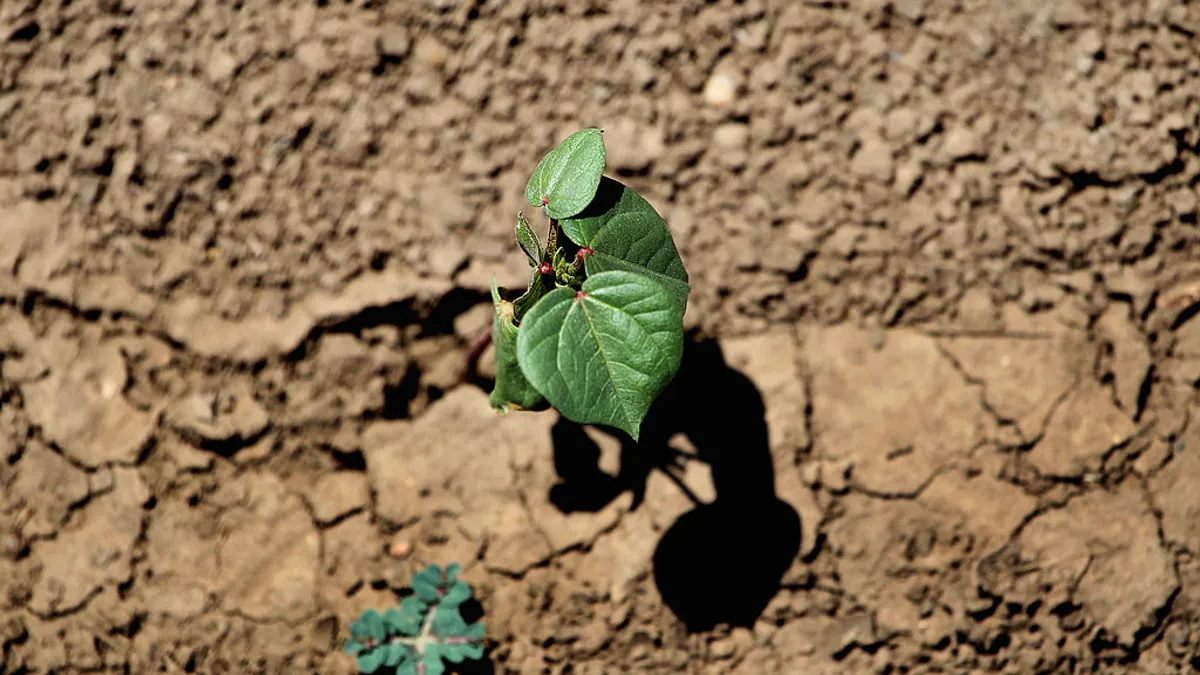Dive Brief:
- Hot and dry conditions across the U.S. South and Great Plains have sapped soil moisture, disrupted cotton production and delayed the start of planting season for growers of winter wheat.
- Winter wheat planting progress was behind the five-year average pace in Oklahoma and South Dakota, "reflecting the fact that some producers are awaiting rain before seeding the crop," according to an Agriculture Department update last week.
- Extreme drought conditions have also affected cotton production in the top producing state of Texas. Close to a third of the Texas cotton crop was rated "poor or very poor condition," per the USDA.
Dive Insight:
As Southeast farms grapple with destructive flooding from Hurricane Helene, an expanding drought in the West is presenting more challenges for producers.
At least 44% of winter wheat production is currently affected by drought, according to USDA. While some farmers are choosing to wait for beneficial rains to boost planting conditions, waiting too long could risk crop yield losses.
In Oklahoma, only 32% of the intended winter wheat acreage had been planted by Oct. 6, according to the USDA, compared to the five-year average of 46%.
Wheat farmers are hoping to capitalize on a rebounding global market after U.S. exports plummeted to a 50-year low. U.S. wheat production is expected to grow 9%, and the sector reported accelerated exports throughout the summer.
Drought is also contributing to a one-two punch facing the cotton industry. Thirsty crops in Texas stand in stark contrast to waterlogged fields in Georgia, which remain inundated from Hurricane Helene's destruction.
Searing temperatures have challenged Texas producers for the past few years, and more farms have chosen to simply give up. According to Texas A&M AgriLife Extension, approximately 450,000 fewer acres of upland cotton were planted in June, representing a 7% decrease and a projected 39% abandonment rate.
Beyond cotton, extreme drought conditions have harmed hay production and destroyed pasture conditions for livestock. While conditions have improved since 2022, when drought enveloped the majority of the state and pushed producers to sell off cattle, dryness remains a pressing problem in western Texas.
















